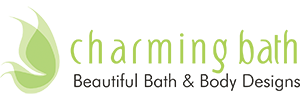
What Is Sodium Laureth Sulfate?
2022-08-13 16:14Sodium Lauryl Sulfate (SLS) is one of the ingredients listed in the shampoo bottle. But unless you're a chemist, you probably don't know what it is. This chemical is present in many cleaning and beauty products, but is often misunderstood.
Urban myths link it to cancer, skin irritation, and more. Science may tell a different story.
How it works
SLS is a so-called "surfactant". This means it reduces surface tension between ingredients, which is why it is used as a cleaner and foamer.
Most concerns about SLS stem from the fact that it can be found in beauty and self-care products, as well as household cleaners.
Sodium Laureth Sulfate (SLES) is a surfactant with a similar chemical formula. However, SLES is milder and less irritating than SLS.
Where to find SLS
If you look under the bathroom sink or on the shelves in the shower, chances are you'll find an SLS in your home. It is used in a variety of products, including:
Beauty products: shaving cream, lip balm, hand soap, nail care, makeup remover, foundation, facial cleanser, exfoliator and hand soap.
Hair care products: such as shampoos, conditioners, hair dyes, dandruff treatments, and styling gels
Dental care products such as toothpaste, teeth whitening products and mouthwashes.
Bath products: such as bath oils or salts, body washes and bubble baths.
Creams and lotions: such as hand creams, face masks, anti-itch creams, hair removal products, and sunscreens.
You'll notice that all of these products are applied topically, or applied directly to the skin or body.
SLS is also used as a food additive, usually as an emulsifier or thickener. It can be found in dry egg products, some marshmallow products, and some dry beverage bases.
Is it dangerous?
The U.S. Food and Drug Administration (FDA) considers SLS safe as a food additive.
Regarding its use in cosmetic and body products, a 1983 SLS safety assessment study published in the International Journal of Toxicology (latest assessment) found that if used briefly and rinsed off the skin, as with shampoos and shampoos, It is harmless. Soap.
Products that stay on the skin longer should not have more than 1% SLS concentration, the report said.
However, the same assessment did suggest some possible, albeit small, risks to humans from the use of SLS. For example, some tests have found that sustained skin exposure to SLS may cause mild to moderate irritation in animals.
Nonetheless, the evaluation concluded that SLS is safe in formulations for cosmetic and personal care products. Since many of these products are designed to rinse off after short-term use, the risk is minimal.
According to most studies, SLS is an irritant, but not a carcinogen. Research has shown no link between SLS use and increased cancer risk.
According to a 2015 study, SLS is safe to use in household cleaning products.
